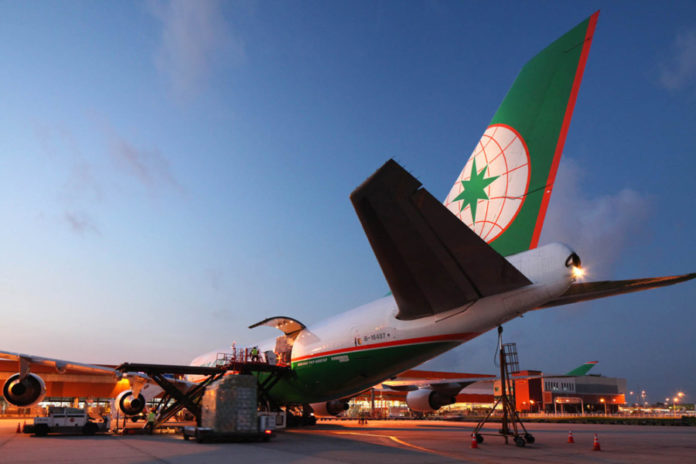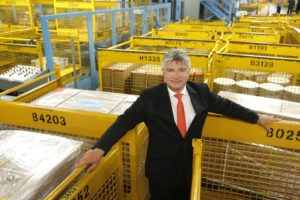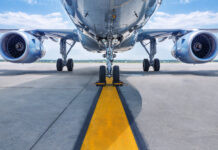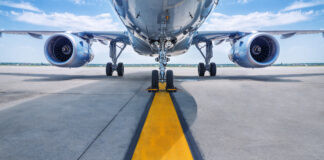

The current peak season may be stealing the lime light, but underlying it all has been a solid year for the industry and for one market in particular – SE Asia – air cargo supply chain executives are upbeat on the market’s solid future despite the challenges, Donald Urquhart writes.
It is not hard to see why the optimism remains so strong for the region. Economic growth continues to thrive – particularly from countries as diverse as the fast-rising star Vietnam, with somewhat surprising growth centres like the Philippines and Indonesia and of course the more established stalwarts of Singapore and Malaysia.
From his vantage point as a Bangkok-based GSSA, Chirasak Chandratat, deputy managing director of AVS Thailand (part of the ECS Group), points to Thailand, Singapore, Vietnam, Cambodia and Myanmar, respectively, as being the top destinations in the region for new foreign investment.
For the export-oriented economies of the region, the global economic recovery translated directly to their growing GDPs and growing domestic prosperity backed by vast, young populations has positioned them ideally as e-commerce consumption spreads like wildfire throughout the region.
“The growing young middle class population, especially in Thailand, Vietnam, Philippines and Indonesia will certainly continue to help their economies grow,” notes Thomas Ong, Group CEO of AVS.


Indeed this growing regional prosperity has seen a gradual shift in trading patterns away from Asia to Europe/North America to trade with itself. Asia’s share of trade with Europe and North America dropped from 40-33 per cent in the decade between 2003 and 2013, but at the same time its share of intra-regional trade grew from 50-54 per cent – both trends that are expected to continue to deepen, and at a rapidly growing pace.
The intra-Asia air cargo trade lane is forecast to grow at 6.5 per cent in the decade between 2013 and 2023, up significantly on the world air cargo growth forecast of 4.7 per cent. Currently the top five intra-Asia air cargo routes are China- Korea, Japan-Korea, Hong Kong-Korea, Hong Kong-Taiwan and China-Japan.
Further down the list of ‘top tens’, emerges Southeast Asia’s Singapore (with Australia) and Thailand (with Japan). Likely soon to appear will be Vietnam as it rockets up the charts in both economic and air cargo tonnage terms.
Economic growth across the region is expected to continue at least at 3-4 per cent per year on average across the region until 2020 at least.
“The Southeast Asia region is doing very nicely,” says Shukor Yusof, founder of Endau Analytics, a Malaysia-based aviation and economics consultancy firm. The region he says, is notable for its “stable economic growth in emerging markets while some, like Malaysia, Philippines and Indonesia are seeing higher GDP growth which is fueling demand.
Southeast Asia is a hub of air activity, buzzing from growing middle class,” he adds. “Improved trade relations amongst the ASEAN nations are helping cargo become more important,” Yusof notes, adding that the ASEAN Free Trade Area (AFTA) will also further drive this trade as it picks up momentum.
For cargo handler Hong Kong Air Cargo Terminal Ltd (Hactl) the year has delivered solid numbers with total traffic up 16.6 per cent at the half-way point. And of this growth, Southeast Asia has been a significant contributor, with volumes from this particular region growing 22 per cent in the first half year-on-year – the best performance of Hactl’s Big 5 markets. This is a key reflection of the “underlying trends of growing intra-Asia trade, on the back of strengthening economies in the region,” Hactl chief executive Mark Whitehead said.
One country in particular stands out, he adds: “We see huge potential for Vietnam and we were pleased to welcome Vietjet to our carrier family in 2016.”
Electronics products feature strongly in Vietnam traffic along with shoes and apparel. Agreeing on the potential of Vietnam, Ong, highlighted the country’s stunning economic growth – with its GDP averaging over 6.0 per cent from 2000 through to 2017 and hitting a high of 7.46 in the Q3 of this year.
A portion of this growth in recent years, was the spill-over from China, as manufacturers sought to diversify their production away from the single-source of China. But changing production patterns is also occurring in other ways as well, Ong notes, citing the example of semiconductors.
“There has been an upsurge in transfer of semiconductor wafer fabrication mainframe equipment since last year, especially from Singapore to China,” he says in reference to China’s building up of its wafer fab capabilities. This is on top of the components moving within Southeast Asia and China, he adds.
Intra-Asia demand has been strong over the past few years, and is expected to remain so going forward with general expectations of healthy growth in trade among Asian economies, says Chin Yau Seng, president of Singapore Airlines Cargo.
Traditionally a substantial portion of these intra-Asia volumes have been sub-component manufacturing out of Southeast Asia and into China for final assembly.
“While sub-component cargo into China, as part of consolidated shipments, remains a key contribution to intra-Asia volumes, there has also been strong performance in other segments such as perishables, e-commerce and finished goods, particularly electronics,” Chin says.
Whitehead concurs saying this sub-component traffic is likely to continue, “but there is also growth in exports of finished hi-tech goods such as solid state drives (SSDs) and mobile phones which would once have been assembled and finished in China.


“While labour costs remain lower in these other countries, they will have an advantage; and, as robotics gradually take over production their costs will remain competitive, but the significance of lower costs will logically become less material,” he cautions.
“There is every reason to expect continuing above-average growth throughout Southeast Asia, as emerging markets like Vietnam, Cambodia, Laos, Myanmar and others develop industry and exports,” says Whitehead.
“This will drive greater wealth per capita, and eventually will lead to increased imports as consumers develop a taste for many of the items produced elsewhere in the world – a repeat of what has been happening in China over the past 10-15 years.”
Market challenges
But while growth rates continue skyward throughout the region and in turn, drive air cargo demand, significant challenges remain. “In recent years, industry overcapacity has been an issue for a number of intra-Asia lanes, as a result of the significant growth in bellyhold capacity within the region which outpaced the growth in demand,” says Chin.
“However, the gap between capacity and demand has progressively narrowed since the later part of last year,” he adds. Airport infrastructure constraints remain a challenge in several countries, he notes, with congestion mounting in a number of airports around the region, Hong Kong and the Philippines being two pertinent examples.
The related issue of traffic rights will also remain an issue on the intra-Asian for some time to come, according to Stan Wraight, president, CEO and co-founder of Hong Kong-based Strategic Aviation Solutions and this “still has to be fully liberalised if Jack Ma’s statement of ‘anything, anywhere in three days, or less’, is to be fulfilled.”
The rapid development of low cost carriers (LCCS) has also been a challenge to the more established mainline carriers in the region and while Yusof says, “they’re not a major force, but LCCs have been adept at exploiting available belly hold space.”
AirAsia, in particular he says, has been able to capitalise on their capacity, largely due to their larger fleet and the fact they have developed specific cargo products and even a final-mile, low cost courier service, Redbox.
And one LCC in the region – VietJet – has even stated its ambition to operate maindeck capacity at some point in the near future. These and quite a number of other budget carriers operating in the region have been growing at the expense of traditional carriers like Cathay Pacific and Singapore Airlines for many years now, Ong highlights.
All of this adds to further fuel the over-capacity situation which is made even worse Ong says, by the penetration of the Middle East carriers into the region and with “their very low rates this means there can be no winners,” he adds.
“Low yields and capacity over-supply remain the biggest challenges. It will continue to discourage freighter operators and cause them to exit this region when they have better options, if not for our strong imports,”
Ong says adding that the integrators are the exception to this. And of course the old bug bear of e-freight with all of its foibles, is a common problem across the region.
“The pace of technological adoption to improve trade processes, including the move away from paper requirements, has also been slow in some places,” Chin adds.
Another angle often not discussed within air cargo circles is the significant road and rail infrastructure being put into place across portions of Southeast Asia, as a result of the economic growth.
“This growth is also supported by significant infrastructure factors provided by each ASEAN member, particularly highways to support cross border truck and train network expansion,” highlights Chandratat.
While these developments will ultimately benefit the countries and market as a whole in the region, they will however have a negative impact on the air cargo industry, he says.
Trends
The rapid rise of e-commerce is a salient trend in the region, highlights Chin. “We anticipate accelerating growth in e-commerce volumes in Southeast Asia with the expansion, as well as greater purchasing power, of a digital-savvy middle income segment in the region.
“Given the importance of short delivery times for e-commerce movements, air cargo is expected to benefit significantly from this growth. Recognising this trend, we have created a dedicated e-commerce team to build partnerships and design customised solutions for customers,” he added.
Similarly, Wraight highlights that e-commerce is clearly a factor in the region’s trade growth, with Singapore by far and away the most aggressive commercially, adding, “it won’t be long before Malaysia and Indonesia see the benefits and make the necessary infrastructure investments in last mile and facilitation centres at the airports to serve the major shippers.”
In Malaysia that is already a work in progress, with Alibaba establishing an e-fulfilment centre at Kuala Lumpur International Airport (KLIA) in conjunction with the government.
“The tremendous investments of Alibaba in Lazada and other platforms in Singapore, the very progressive work of Singapore Post and the Changi Airport Authorities, are good examples of their confidence. DHL Aviation has also upped its game and made strong investments,” he says.
But Wraight also warns not to disregard the appetite in Asia for goods produced in the Americas and Europe.
“If airlines are progressive in opening up their capacity and developing transparent and easy to use products, I see no end in the possibilities,” he says.
On the ground, this trend is being clearly felt at the handling point in the chain. Hactl’s Whitehead points to the clear trend towards smaller shipments and loose cargo, “and we are adapting to this,” he adds.
“We are now handling over 1,000 mail bags every day, containing e-commerce shipments, as a result of Hacis’ successful collaboration with the postal authorities which has brought new traffic to our carriers. Our staff have meanwhile honed their pallet build-up skills to accommodate this changing cargo profile and the growth in small parcels,” he said noting that mail used to be loaded in containers, but now must be built-up on pallets.
Indeed this is a theme that Wraight echoes as he underscores that ground handling will have to be more in tune with new realities, smaller shipments, direct shipper products and with a lot of value adding needed. This however means that a strong airline and ground handling agent combination, with new relationships based on quality and service can be mutually lucrative for both parties.”
Focus: Thailand
Major drivers of growth in Thailand associated with the global economic recovery, such as private consumption and private investment, have yet to show a broad based and sustained expansion, notes Chirasak Chandratat, deputy managing director of AVS Thailand.
Growth in 2017 will likely be underpinned by public spending and private consumption with possible headwinds from more uncertain global economic prospects, he said.
“Continued commitment to implementing structural reforms is critical to raising the long-term growth of the country,” he notes, in reference to the military-led government.
The country’s positive trade balance continued to expand as exports of goods and services expanded and imports decreased slightly. Merchandise and service exports grew due to manufacturing products and overall exports benefited from expanded demand in Europe, US and CLMV (Cambodia, Laos, Myanmar, Vietnam) region.
For the air freight sector, exports from Thailand have been fairly flat since the beginning of 2017, bucking the solid growth trends in the market, but projections suggest a slight increase in Q3/4 in line with the market trend and economic recovery, he said.
Thailand also suffers similar problems to the rest of Asia in terms of over-capacity. The growth of both freighter and passenger flights from/to Thailand, particularly Middle East Airlines and European Carriers that plan to increase their frequencies early next year.
This will cause further oversupply in market and rate competition at a time fuel costs are also increasing, he said.
Noting the fact Alibaba chose Malaysia to set up its fulfilment hub, Chandratat highlighted the rapid growth of e-commerce and noted that Thailand is still a viable alternative due to the fact that more capacity is available via Bangkok or Phuket with more competitive air transportation costs.
Focus: Myanmar
After the country’s General Election and new government, there are more opportunities to enhance more trade lanes regionally and globally, Chandratat said.
And, Myanmar has recently received support from ASEAN and EU Countries. In this regard, there is more foreign investment and more import/export volume compared to recent years, he said.
And the US government has recently approved the GSP for Myanmar recently, and “this will encourage more growth in Myanmar from our point of view.”
That anticipated growth has led AVS to focus on Myanmar because of the fact it is showing the most promising growth in Southeast Asia.











